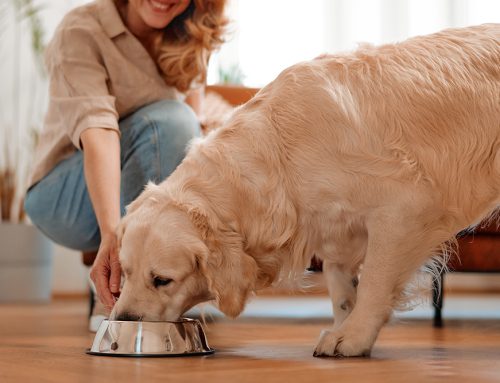Pet owners often underestimate the impact of dental health on their furry friends. Beyond fresh breath, proper dental care is crucial for a pet’s overall well-being. In this blog, we’ll delve into common dental issues affecting pets and offer practical tips on prevention.
Common Pet Dental Issues
Dental plaque and tartar buildup
Dental plaque is a soft, sticky film that develops on the surface of your pet’s teeth. It consists of bacteria, food particles, and saliva. When your pet consumes food, especially ones high in sugars and starches, it creates an environment where bacteria thrive. These bacteria release acids that, when combined with saliva, form plaque on the teeth. Over time, if not removed through regular brushing or professional cleaning, plaque hardens into tartar or dental calculus. Tartar is a hardened, yellowish deposit that firmly adheres to the teeth, providing a breeding ground for more bacteria.
Bacteria play a pivotal role in dental issues for pets. As plaque accumulates on the teeth, bacteria multiply and produce harmful acids. These acids can erode tooth enamel, leading to cavities, and contribute to gum inflammation.
Gingivitis and its early signs
Gingivitis is an inflammation of the gums, typically caused by the presence of plaque and bacteria along the gumline. When plaque is not adequately removed, it irritates the gums, causing them to become red, swollen, and sensitive. Gingivitis is an early stage of gum disease and, fortunately, is reversible with proper dental care.
Periodontal disease and its stages
If gingivitis is left untreated, it can progress to periodontal disease. In this advanced stage, the inflammation extends beyond the gums and affects the supporting structures of the teeth, including the ligaments and jawbone. As the disease advances, pockets may form between the teeth and gums, providing a breeding ground for more bacteria and exacerbating the condition.
Periodontal disease poses serious risks to your pet’s oral health. The gums may recede, exposing the tooth roots, and teeth may become loose or fall out. The inflammatory process can extend to the jawbone, potentially leading to bone loss. Severe cases of periodontal disease not only impact oral health but can also contribute to systemic health issues if bacteria enter the bloodstream.
Tooth decay and cavities in pets
Tooth decay in pets is often influenced by a combination of factors, including diet, oral hygiene, and genetic predispositions. Diets high in sugars and carbohydrates contribute to the growth of cavity-causing bacteria. Additionally, poor oral hygiene practices, such as infrequent tooth brushing or lack of dental care, increase the risk of decay.
Cavities, or caries, in pets are the result of demineralization of tooth enamel by acids produced by bacteria. These cavities can lead to pain, discomfort, and difficulty eating. If left untreated, cavities may progress to involve the deeper layers of the tooth, potentially leading to infection and abscess formation.
Signs of Dental Problems in Pets
Bad breath: Bad breath, also known as halitosis, is a common indicator of dental issues in pets. The presence of bacteria in the mouth, especially when combined with plaque and tartar buildup, can lead to unpleasant odors. Persistent bad breath is often a sign of an underlying dental problem and should not be ignored.
Changes in eating habits: Dental problems can affect a pet’s ability to eat comfortably. If you notice changes in your pet’s eating habits, such as reluctance to eat, chewing on one side of the mouth, dropping food, or taking longer to finish meals, it could be indicative of dental discomfort. Paying attention to these changes can prompt timely intervention to address potential dental issues.
Pawing at the mouth or face: Pets may exhibit behavior indicating oral discomfort by pawing at their mouth or face. This behavior is a response to pain, irritation, or itching in the oral cavity. If you observe your pet frequently pawing at the mouth, rubbing the face against surfaces, or showing signs of discomfort while eating, it’s crucial to investigate potential dental problems.
Red or bleeding gums: Inflamed or bleeding gums are clear signs of gum disease, such as gingivitis. Healthy gums should be pink, firm, and free from bleeding. If you notice redness, swelling, or bleeding along the gumline, it indicates inflammation and may be a signal of an underlying dental issue. Regularly inspecting your pet’s gums can help detect these early signs.
Tips for Preventing Pet Dental Issues
- Brushing your pet’s teeth: Regular tooth brushing is one of the most effective ways to prevent dental issues in pets. Use a pet-specific toothbrush and toothpaste to gently brush your pet’s teeth. Aim for a daily brushing routine, but if that’s not feasible, strive for several times a week. This helps remove plaque before it hardens into tartar, reducing the risk of gingivitis and periodontal disease.
- Dental-friendly toys and treats: Provide your pet with toys and treats specifically designed to promote dental health. Chewing helps remove plaque and stimulate saliva production, which can naturally clean the teeth. Look for products endorsed by veterinary professionals and ensure they are appropriate for your pet’s size and chewing habits.
- Balanced diet for dental health: Feed your pet a balanced and nutritious diet that supports dental health. Some specially formulated pet foods contain ingredients that help reduce plaque and tartar buildup. Discuss dietary choices with your veterinarian to ensure they align with your pet’s specific needs and contribute to overall oral health.
- Regular at-home oral inspections: Conduct regular at-home oral inspections to monitor your pet’s dental health. Look for signs of redness, swelling, or bleeding gums, as well as any abnormalities in the teeth or mouth. Early detection of issues allows for timely intervention. If you notice anything concerning, consult with your veterinarian.
- Professional dental check-ups: Schedule regular veterinary check-ups, where your veterinarian will examine your pet’s teeth. Veterinarians can assess your pet’s oral health, identify any developing issues, and recommend appropriate interventions. Professional dental cleanings are usually recommended for pets over a few years old. Performed under anesthesia, these are essential for removing tartar and addressing issues below the gumline that may not be visible during a routine exam.
Prioritizing your pet’s dental health is a key aspect of responsible pet ownership. By understanding common dental issues, recognizing signs of problems, and implementing preventive measures, pet owners can ensure their furry companions enjoy a happy and healthy life. Don’t forget to schedule regular dental check-ups with your veterinarian and work together to keep those pearly whites shining bright!
















Leave A Comment